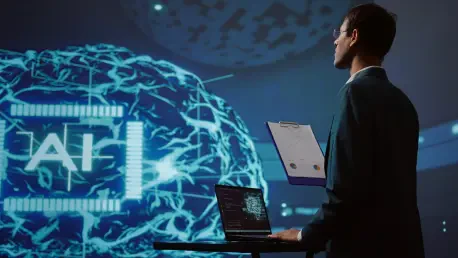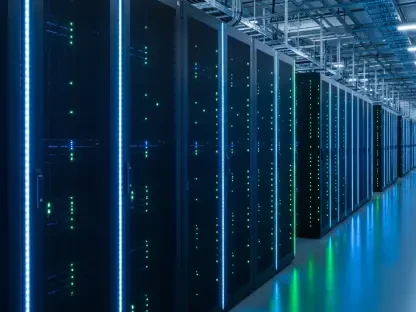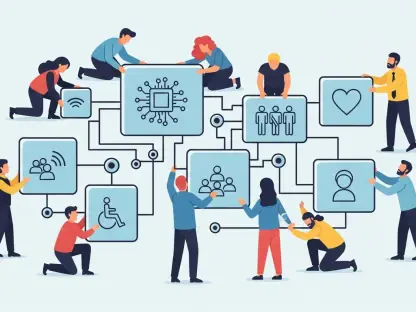Introduction
Today, we’re thrilled to sit down with Laurent Giraid, a renowned technologist with deep expertise in Artificial Intelligence. With a focus on machine learning, natural language processing, and the ethical implications of AI, Laurent brings a unique perspective to the rapidly evolving intersection of technology and society. In this interview, we’ll explore the mysteries of machine learning, often described as a “black box,” delve into how tools from theoretical physics can illuminate its inner workings, and discuss the broader societal impacts of AI. From the challenges of scaling models to the ethical dilemmas they pose, Laurent offers insights that are both thought-provoking and accessible.
Can you explain what people mean when they refer to machine learning as a ‘black box’?
Well, the term ‘black box’ comes from the idea that with machine learning, you feed in a bunch of data, and somehow, through layers of complex computations, you get an output—whether it’s a prediction, a decision, or a classification. But what happens in between is often a complete mystery, even to the people who build these systems. It’s like a magic trick; you see the input and the result, but the process is hidden. This opacity is a big deal because as we rely on AI for critical things like medical diagnoses or financial decisions, not understanding how these models arrive at their conclusions can lead to trust issues or even harmful outcomes. We need to crack open that box to ensure fairness, accountability, and safety.
What inspired you to dive into the world of machine learning, given your background in technology and AI?
I’ve always been fascinated by systems that can mimic human reasoning, and machine learning represents the cutting edge of that. A few years ago, I was working on a project involving natural language processing, and I realized just how much potential there was to solve real-world problems—think automated customer support or even translating languages in real-time. But I also saw how little we understood about why these models worked the way they did. My background in technology, especially in breaking down complex systems, gave me a unique angle to approach machine learning not just as a tool, but as a puzzle to solve. It’s about asking the fundamental questions: Why does this work? How can we make it better?
Machine learning is often described as energy-intensive and costly. Can you unpack that for us?
Absolutely. Training a machine learning model, especially the large ones used in things like image recognition or language generation, requires massive computational power. We’re talking about thousands of specialized processors running for days or even weeks, consuming huge amounts of electricity. That’s not just a financial cost—though the bills are staggering, often in the millions for big projects—but also an environmental one, contributing to carbon emissions. The bigger the model or dataset, the more resources it demands. Scaling up isn’t just a linear jump; it’s exponential. Doubling the size of a model might mean quadrupling the energy and time needed, which is why efficiency and smarter design are so critical.
Could you walk us through the concept of ‘scaling laws’ in machine learning and why they matter?
Scaling laws are essentially patterns or rules that help predict how a machine learning model’s performance changes when you increase things like the size of the dataset or the model itself. Imagine you’re baking a cake—if you double the ingredients, does the cake taste twice as good? In machine learning, it’s similar: if you double the data, does accuracy improve by a little, a lot, or not at all? These laws give us a roadmap for that. They’re crucial for planning because training at scale is so expensive. The challenge is that figuring out these laws often requires running countless experiments or diving into complex math, since the behavior isn’t always intuitive or straightforward.
I’ve heard you’ve drawn inspiration from physics tools like Feynman diagrams. Can you explain what those are and how they apply to machine learning?
Sure, Feynman diagrams are a visual tool originally developed in physics to simplify incredibly complex calculations about particle interactions at the quantum level. Instead of writing out endless equations, you draw these diagrams where lines and points represent different values or interactions—it’s almost like a flowchart for physics. I found that this approach can be adapted to machine learning to map out the intricate relationships within neural networks. It makes the math more manageable and helps us visualize how data transforms through the model. Compared to traditional equations, it’s often easier to spot patterns or errors, which has been a game-changer in understanding model behavior.
In your work, you’ve pushed beyond previous research limits. Can you share how you expanded on earlier studies?
Certainly. A few years back, some research set a specific boundary on analyzing machine learning models, focusing on a simplified scenario that didn’t fully capture real-world complexity. It was a useful starting point, but it left a lot unanswered about how models behave under different conditions. My recent work took that a step further by tackling the problem in a more general context, allowing us to derive more accurate predictions about performance at scale. This wasn’t just an incremental step; it gave us new insights into optimizing models without relying on endless trial and error, saving both time and resources.
You’ve expressed concerns about the societal impact of AI. What aspects of this technology’s influence on our daily lives keep you up at night?
There’s a lot to unpack here, but one of my biggest worries is how AI subtly shapes our behavior without us even noticing. Take something like a video streaming algorithm—it’s designed to keep you watching by recommending content based on your past behavior. But over time, it can trap you in an echo chamber, feeding you more extreme or polarizing content because that’s what gets clicks. This isn’t just about entertainment; it affects how we think, vote, and interact. What concerns me most is that we’re deploying these systems at a massive scale without fully grasping their long-term effects. It’s not about robots taking over; it’s about us losing control over the tools we’ve built.
Looking ahead, what’s your forecast for the future of machine learning and its role in society?
I think machine learning will continue to permeate every aspect of our lives, from healthcare to education, becoming as ubiquitous as electricity. The potential for good is immense—think personalized medicine or smarter disaster response systems. But the flip side is that without careful oversight, we risk amplifying biases, widening inequalities, and eroding privacy. My hope is that we’ll see a stronger push toward transparency and ethics in AI development over the next decade. If we can balance innovation with responsibility, I believe machine learning could truly transform society for the better. But it’s going to take a collective effort—researchers, policymakers, and the public all have a role to play.









